The mammoth bone had been
dated to around 35000 years
ago:
... The earliest depiction
that has been linked to the
constellation of Orion is a
prehistoric (Aurignacian)
mammoth ivory carving found
in a cave in the Ach valley
in Germany in 1979.
Archaeologists have
estimated it to have been
fashioned approximately
32,000 to 38,000 years ago
...
The precessional cycle was
presumably in ancient times regarded
as 26000 years, which means
the current return to
visibility of heliacal
Betelgeuze in July 3 (184) -
half a year away from
January 3 (368) - would at the
very ancient time of the
mammoth bone instead have
been around (35000 - 26000)
/ 26000 *365.25 = 126 days
earlier.
|
BETELGEUZE (THE MOIST ONE) |
|
Jan 29 |
138 |
June 17 (184 - 16) |
41 |
July 29 (210) |
183 |
|
Culmination |
Heliacal |
Full Moon |
184 - 126 = 58 (February
27). But this is only a very
rough estimate in order to
secure the general location
in Mammoth times of heliacal Betelgeuze. It
should have been in the early
northern spring and the
estimates given by the
archeologists were probably
influenced by calculations
such as these:
|
32,000 bp |
35,000 bp |
38,000 bp |
|
184 - 84 |
184 - 126 |
184 - 169 |
|
April 10 (100) |
Febr 27 (58) |
Jan 15 |
A good
alternative to February
27 is April 10
(*20), because it gives
an easy rule of thumb
for calculating dates at
the time of the Bull:
E.g. would the
stars which currently
were rising with the Sun
in April 10 have risen
back to visibility in
right ascension day *20
+ *64 + *16 = *100.
Which means we can
immediately translate
April 10 (100) into day
100 + 80 = *100 (JULY
29) - which also 'happens to
be' a place in the sky
half a year away from
the current culmination
(at 21) of Betelgeuze.
And then we should
also consider the place of
Rigel:
...
In view of the almost
universal prevalence of
the Pleiades year
throughout the
Polynesian area it is
surprising to find that
in the South Island and
certain parts of the
North Island of New
Zealand and in the
neighboring Chatham
Islands, the year began
with the new Moon after
the yearly morning
rising, not of the
Pleiades, but of the
star Rigel in Orion
...
Rigel (*78) was rising
in June 7 (158) and this
was 10
days earlier than
Betelgeuze (*88).
|
32,000 bp |
35,000 bp |
38,000 bp |
|
174 - 84 |
174 - 126 |
174 - 169 |
|
March 31 (90) |
Febr 17 (48) |
Jan 5 (370) |
At the time of the
Golden Age of the Bull
the place of heliacal
Rigel had been in June 7 (158) -
64 = 94 (APRIL
4) = 10 days after
the Julian equinox in
MARCH 25 (84). But then
we should add 16 days to
reach visibility: APRIL
4 + 16 =
APRIL 20 (110). In
my tables this last
correction has not been
illustrated. Instead I
have always tried to keep to a
strict method by which
the stars are correlated
with the right ascension
dates at my assumed
epoch for
rongorongo.
Therefore we can
find heliacal Rigel
10 glyphs earlier
in the rongorongo
texts than heliacal
Betelgeuze,
for instance:
|
tagata
tuu rima ki
ruga |
te
maitaki |
te henua |
Rei hata
ia |
tagata
rogo |
|
Tagata.Man;
human being
in general;
the plural
is gagata.
Vanaga. Man,
mankind;
tagata ke,
some one
else;
tagata no,
nation. P
Pau.:
tagata,
man. Mgv.:
tagata,
man or
woman. Mq.:
enata,
enana,
kenana,
man. Ta.:
taata,
id.
Tagataa,
incarnate.
Tagatahaga,
human,
humanity.
Churchill.
Rogo.
Rogorogo:
Originally,
'orators,
bards' of
Mangareva.
Borrowed
into the
Rapanui
language in
1871, it
came to
generically
signify the
wooden
tablets
incised with
glyphs, the
writing
system
itself, and
the
respective
inscriptions.
Earlier the
term ta
was used for
the
writings.
Fischer.
Mgv.:
rogouru,
ten. Mq.:
onohuu,
okohuu,
id.
Churchill. |
 |
 |
 |
 |
 |
|
Ca3-21 →
March 21 |
Ca3-22 (73) |
Ca3-23 |
Ca3-24 |
Ca3-25 →
March 25 |
|
CLOSE TO THE
FULL MOON: |
|
π4
Orionis
(72.1),
ο¹ Orionis
(72.4),
π5
Orionis
(72.8)
*31.0 =
*72.4 -
*41.4 |
π¹
Orionis
(73.0),
ο² Orionis
(73.4),
HASSALEH = ι
Aurigae
(73.6),
π6
Orionis
(73.9)
*32.0 =
*73.4 -
*41.4 |
ALMAAZ (The
Male Goat) =
ε
Aurigae
(74.7),
HAEDUS I = ζ
Aurigae
(74.8) |
HAEDUS II =
η Aurigae
(75.9) |
5h (*76.1)
ε
Leporis
(76.0),
CURSA
(Footstool)
= β Eridani
(76.4),
λ
Eridani
(76.7)
*35.0 =
*76.4 -
*41.4 |
|
June 1 (152) |
2 (336 - 183
= 153) |
3 |
4 |
5 |
|
"April 21
(111) |
22 |
23 |
24 |
25 → 4-25 |
 |
|
CLOSE TO THE
SUN: |
|
Dec 1 |
2 (336) |
3 |
4 |
5 |
|
ºNov 27 |
28 (332 =
322 + 10) |
29 |
30 |
ºDec 1 (335) |
|
ι Ophiuchi
(255.3),
GRAFIAS = ζ
Scorpii
(255.4)
*214.0 =
*255.4 -
*41.4 |
κ Ophiuchi
(256.2), ζ
Arae
(256.5), ε
Arae
(256.8),
CUJAM (Club)
= ε Herculi
(256.9) |
No
star listed
(257) |
17h (*258.7)
ARRAKIS = μ
Draconis
(258.7) |
Mula-19 (The
Root)
SABIK (The
Preceding
One) =
η
Ophiuchi
(259.7),
η
Scorpii
(259.9) |
|
kua
tupu te
rakau |
kua
tupu -
te
kihikihi |
te
hau tea |
|
Kihi.
Kihikihi,
lichen;
also:
grey,
greenish
grey,
ashen.
Vanaga.
Kihikihi,
lichen
T, stone
T.
Churchill.
The
Hawaiian
day was
divided
in three
general
parts,
like
that of
the
early
Greeks
and
Latins,
-
morning,
noon,
and
afternoon
-
Kakahi-aka,
breaking
the
shadows,
scil.
of
night;
Awakea,
for
Ao-akea,
the
plain
full
day; and
Auina-la,
the
decline
of the
day.
The
lapse of
the
night,
however,
was
noted by
five
stations,
if I may
say so,
and four
intervals
of time,
viz.:
(1.)
Kihi,
at 6
P.M., or
about
sunset;
(2.)
Pili,
between
sunset
and
midnight;
(3)
Kau,
indicating
midnight;
(4.)
Pilipuka,
between
midnight
and
surise,
or about
3 A.M.;
(5.)
Kihipuka,
corresponding
to
sunrise,
or about
6 A.M.
...
(Fornander)
|
 |
 |
 |
|
Ca4-1
(77) |
Ca4-2 |
Ca4-3 |
|
CLOSE TO
THE FULL
MOON: |
|
μ
Aurigae,
μ
Leporis
(77.6) |
ĸ
Leporis
(78.0),
RIGEL
(Foot) =
β
Orionis
(78.1),
Flaming
Star =
IC405
(78.2),
CAPELLA
= α
Aurigae
(78.4),
ο
Columbae,
τ
Orionis
(78.8)
*37.0 =
*78.4 -
*41.4
THUBAN
(α
Draconis) |
λ
Aurigae
(79.0),
λ
Leporis
(79.6),
ρ
Aurigae
(79.7)
ARCTURUS
(α
Bootis)
|
|
CLOSE TO
THE SUN: |
|
NODUS I
= ζ
Draconis
(260.0),
π
Herculis
(260.7),
RAS
ALGETHI
= α
Herculis
(260.8) |
SARIN =
δ
Herculis
(261.0),
ο
Ophiuchi
(261.4)
*220.0 =
*261.4 -
*41.4
ALRISHA
(α
Piscium) |
ξ
Ophiuchi
(262.2),
θ
Ophiuchi,
ν
Serpentis,
ζ, ι
Apodis
(262.4),
ι Arae
(262.8),
ρ
Herculis
(262.9)
*221.0 =
*262.4 -
*41.4 |
|
tagata
- te
rau
hei |
te
hokohuki
i te
moko |
te
rau
hei |
e
gagata
hakaariki |
manu |
te
rau
hei |
|
Rau
hei.
1.
Branch
of
mimosa.
2.
Killed
enemy.
3.
Hanged
'fish'.
'Branche
du
mimosa
(signe
de
mort),
ennemie
túe
(poisson
suspendu)'
according
to
Jaussen.
Barthel.
...
The
Sensitive
plant
(Mimosa
pudica
L.)
is a
creeping
annual
or
perennial
herb
often
grown
for
its
curiosity
value:
the
compound
leaves
fold
inward
and
droop
when
touched,
re-opening
within
minutes.
Mimosa
pudica
is
native
to
Brazil,
but
is
now
a
pantropical
weed.
Other
names
given
to
this
curious
plant
are
Humble
plant,
TickleMe
plant,
Shame
plant,
Sleeping
Grass,
Prayer
plant,
Touch-me-not,
Makahiya
(Philippines,
meaning
'shy'),
Mori
Vivi
(West
Indies),
mate-loi
(false
death)
(Tonga)
...
In
the
evening
the
leaflets
will
fold
together
and
the
whole
leaf
droops
downward.
It
then
re-opens
at
sunrise
...
Mimosa
(*192)
is a
name
for
β
Crucis.
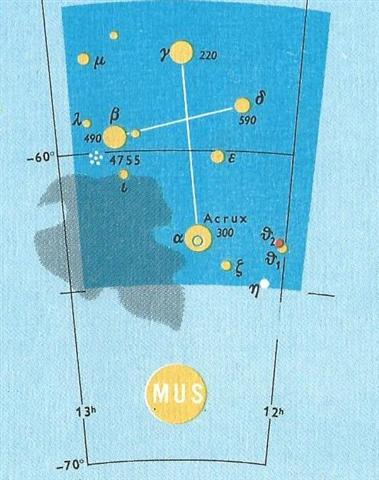 |
 |
 |
 |
 |
 |
 |
|
Ca4-4 |
Ca4-5 |
Ca4-6 |
Ca4-7
(83) |
Ca4-8 |
Ca4-9 |
 |
|
CLOSE
TO
THE
FULL
MOON: |
|
Shur-narkabti-sha-iltanu-5
(Star
in
the
Bull
towards
the
north)
σ
Aurigae
(80.4),
BELLATRIX
(Female
Warrior)
= γ
Orionis,
SAIF
AL
JABBAR
(Sword
of
the
Giant)
= η
Orionis
(80.7),
ELNATH
(The
Butting
One)
= β
Tauri
= γ
Aurigae
(80.9)
*39.0
=
*80.4
-
*41.4 |
ψ
Orionis
(81.1),
NIHAL
(Thirst-slaking
Camels)
= β
Leporis
(81.7) |
KHUFU
MINTAKA
(Belt)
= δ
Orionis,
υ
Orionis
(82.4),
χ
Aurigae
(82.5),
ε
Columbae
(82.6)
*41.0
=
*82.4
-
*41.4
→ 41
Arietis
(Bharani) |
KHAFRE
Al
Hak'ah-3
(Brand)
/
Mrigashīrsha-5
(Stag's
Head)
/
Turtle
Head-20
(Monkey)
/
Mas-tab-ba-tur-tur
(Little
Twins)
ARNEB
= α
Leporis,
CRAB
NEBULA
= M1
Tauri
(83.0,
φ¹
Orionis
(83.1),
HEKA
= λ
Orionis,
ORION
NEBULA
=
M42
(83.2),
φ²
Orionis
(83.6),
ALNILAM
(String
of
Pearls)
= ε
Orionis
(83.7) |
MENKAURE
Three
Stars-21
(Gibbon)
/
Shur-narkabti-sha-shūtū-6
(Star
in
the
Bull
towards
the
south)
/
ANA-IVA-9
(Pillar
of
exit)
HEAVENLY
GATE
= ζ
Tauri,
ν
Columbae
(84.0),
ω
Orionis
(84.2),
ALNITAK
(Girdle)
= ζ
Orionis,
PHAKT
(Phaet)
= α
Columbae
(84.7) |
ο
Aurigae
(85.8),
γ
Leporis
(85.9)
YANG
MUN
(α
Lupi) |
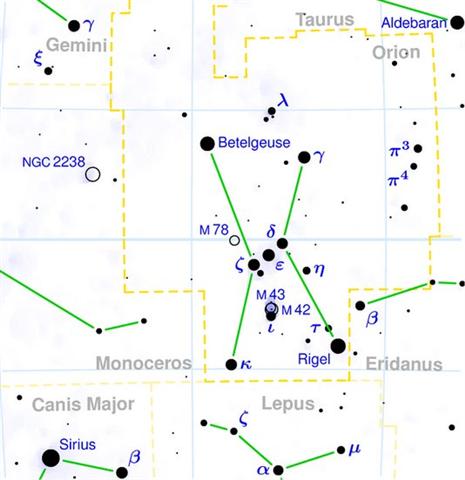 |
|
CLOSE
TO
THE
SUN: |
|
β, γ
Arae
(263.3),
κ
Arae
(263.5),
σ
Ophiuchi
(263.6) |
LESATH
(Sting)
= υ
Scorpii,
δ
Arae
(264.7),
CHOO
(Club)
= α
Arae
(264.9) |
Al
Shaula-17
ALWAID
(Mother
Camels)
= β
Draconis,
MAASYM
(Wrist)
= λ
Herculis
(265.1),
SHAULA
(Sting)
= λ
Scorpii
(265.3),
KUMA
= ν
Draconis
(265.6),
σ
Arae
(265.9)
HAMAL
(α
ARIETIS) |
RAS
ALHAGUE
(Head
of
the
Serpent
Charmer)
= α
Ophiuchi
(266.1),
SARGAS
= θ
Scorpii (266.3),
μ
Ophiuchi,
π
Arae
(266.5),
NAN
HAE
(Southern
Sea)
= ξ
Serpentis
(266.6), AL
DHĪLI
(The
Wolf)
= ω
Draconis,
ι
Herculis
(266.7) |
λ
Arae
(267.1),
GIRTAB
(Seizer)
= κ
Scorpii,
ο
Serpentis
(267.6),
DSIBAN
(Wolf
Pair)
= ψ
Draconis
(267.9) |
KELB
ALRAI
(Dog
of
the
Shepherd)
= β
Ophiuchi,
μ
Arae
(268.1),
KEW
HO
(Nine
Rivers)
= μ
Herculis
(268.6),
η
Pavonis
(268.7),
APOLLYON
= ι
Scorpii
(268.9) |
 |
| te hokohuki |
te moko |
te hokohuki |
|
Hoko. 1. To jump; to rock or swing in rhythm with the chants in festivals, as was the ancient custom; an ancient dance. He to'o mai e te hoa manu i te mamari ki toona rima, he ma'u, he hoko, the 'bird master' receives the egg in his hand and carries it, dancing. 2. Number prefix: 'in a group of...': hokotahi,
alone; hokorua, in a group of two (also companion, e hakarere te kai mo toou hokorua, leave some food for my companion); hakatoru, in a group of three, etc.; hokohía, in a group of how many? Hokohía ana oho koe ki te rano? With how many people will you go to the volcano? Vanaga. 1. To traffic, to trade, to buy, to ransom (hoò); hoòa te kaiga, to buy land. 2. To sport, to play. Churchill. Move the body to and fro with the rythm of a song. Barthel.
Huki. 1. Pole attached to the poop from which the fishing-net is suspended: huki kupega. 2. Digging stick. 3. To set vertically, to stand (vt.). 4. Huki á te mahina, said of the new moon when both its horns have become visible. Vanaga. 1. To post up, to publish. 2. To cut the throat (uki). Mq.: Small sticks which close up the ridge of a house. Ha.: hui, the small uniting sticks in a thatched house. Churchill. Standing upright. Barthel. M. Spit for roasting. Te Huki, a constellation. Makemson. Hukihuki. 1. Colic. 2. To transpierce, a pricking. 3. To sink to the bottom. Churchill. |
 |
 |
 |
| Ca4-10 |
Ca4-11 |
Ca4-12 (88) |
| CLOSE TO THE FULL MOON: |
| μ Columbae (86.1), Saiph (86.5), ζ μ Columbae, SAIPH (Sword) = κ Orionis (86.5), τ Aurigae, ζ Leporis (86.6) |
υ Aurigae (87.1), ν Aurigae (87.2), WEZN (Weight) = β Columbae, δ Leporis (87.7), TZE (Son) = λ Columbae (87.9) |
Ardra-6 (The Moist One) / ANA-VARU-8 (Pillar to sit by)
χ¹ Orionis, ξ Aurigae (88.1), BETELGEUZE = α Orionis (88.3), ξ Columbae (88.5), σ Columbae (88.7)
ZUBEN ELGENUBI (α Librae) |
| June 15 (166) |
16 |
17 (168 = 80 + 88 = 2 * 84) |
| APRIL 12 (166 - 64 = 102) |
13 (→ 14 * 29½) |
14 (104 = 84 + 20) |
 |
| CLOSE TO THE SUN: |
| MULIPHEN (Oaths) = γ Ophiuchi (269.0), BASANISMUS = G Scorpii (269.5), PHERKARD (Dim One of the Two Calves) = δ Ursae Minoris (269.9) |
PTOLEMY CLUSTER = M7 Scorpii (270.5), GRUMIUM (Lower Jaw) = ξ Draconis (270.9) |
RUKBALGETHI GENUBI (Bending Claw) = θ Herculis (271.1), ξ Herculis (271.5), ETAMIN (Head) = γ Draconis, ν Herculis (271.7), ν Ophiuchi (271.8) |
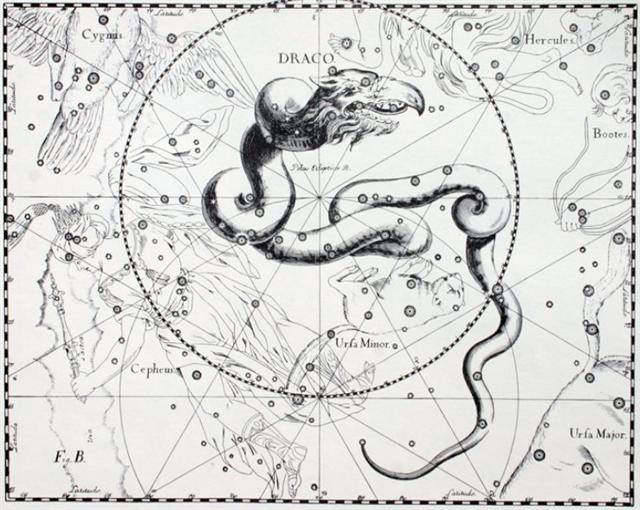 |
In the B text the
very last glyph on
side b is of the
type henua ora
(living earth),
which suggests the
result of the rays
from the star
Betelgeuze having
returned to the sky
above.
...
And they were
sacrificed and
buried. They were
buried at the
Place of Ball
Game Sacrifice,
as it is called. The
head of One
Hunaphu was cut
off; only his body
was buried with his
younger brother.
'Put his head in the
fork of the tree
that stands by the
road', said
One and Seven
Death.
And when his head
was put in the fork
of the tree, the
tree bore fruit. It
would not have had
any fruit, had not
the head of
One Hunaphu
been put in the fork
of the tree. This is
the calabash, as we
call it today, or
'the skull of
One Hunaphu',
as it is said. And
then One
and Seven Death
were amazed at the
fruit of the tree.
The fruit grows out
everywhere, and it
isn't clear where
the head of
One Hunaphu
is; now it looks
just the way the
calabashes look. All
the
Xibalbans
see this, when they
come to look
...
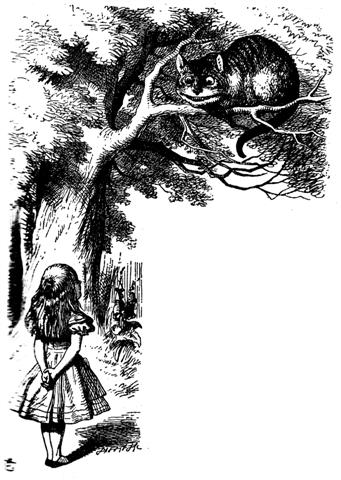
Due to the
effects of the
precession, the current season
for the return of
Betelgeuze would thus have been shifted to
July 3 (168 + 16)
from a possible primordial
day 88 + 16 = 104,
i.e. as defined from
the Golden Age of
the Bull because 184
- 104 = 64.

... Up to the
present time,
fertility spells for
fowls have played an
important role.
Especially effective
were the so-called
'chicken skulls' (puoko
moa) - that is,
the skulls of dead
chiefs, often marked
by incisions, that
were considered a
source of mana.
Their task is
explained as
follows: 'The skulls
of the chiefs are
for the chicken, so
that thousands may
be born' (te
puoko ariki mo te
moa, mo topa o te
piere) ... As
long as the source
of mana is kept in
the house, the hens
are impregnated (he
rei te moa i te uha),
they lay eggs (he
ne'ine'i te uha i te
mamari), and the
chicks are hatched (he
topa te maanga).
After a period of
time, the beneficial
skull has to be
removed, because
otherwise the hens
become exhausted
from laying eggs
...

Ora. 1.
Healthy; to recover, to
be saved (from an
illness or a danger):
ku-ora-á, ina kai mate,
he recovered, he did
not die; ku-ora-á te
haoa, the wound has
healed; e-ora-no-á,
he is still alive;
ora-hakaou mai,
to come back to life;
ora ké, what a
pleasant breeze! (lit:
how healthy!). 2. Stick
for spinning top (made
from the shell of a
sandalwood nut) with
which children make the
top spin. Vanaga.
1. December, January.
Ora nui, November,
October. 2. To live, to
exist, to draw breath,
to survive, to subsist,
to be well, healthy,
safe, to refresh, a
pause, rest, ease; e
ko ora, incurable;
ora tuhai,
previous existence;
ora iho, to
resuscitate, to revive;
ora nui,
vigorous; oraga,
life, existence;
oraga roaroa,
oraga roaroa ke,
oraga ina kai mou,
immortality; oraga
kore, lifeless;
oraga mau, oraga
ihoiho, vivacious;
oraora, oraora
no iti, to be
better; hakaora,
to draw breath, to
revive, to strengthen,
healthy, to sanctify, to
animate, to save, to
repose, to cure, to
rest, to comfort, to
assuage; hakaora ina
kai mou, to
immortalize;
hakaoratagata,
Messiah, Saviour. 3. To
give water to; kua
ora te kevare, to
water a horse;
hakaunu ora, to
water. 4. To staunch, to
stop the flow of a
liquid. 5. To make an
escape; hakaora,
to discharge, to
deliver, to set free. 6.
To be awake (probably
ara); hakaora
to guard. 7. A zephyr,
light wind; kona
ora, a breezy
spot; ahau ora,
agreeable breeze.
Churchill.
Ola, life,
health, well-being,
living, livelihood,
means of support,
salvation; alive,
living; curable, spared,
recovered, healed; to
live; to spare, save,
heal, grant life,
survive, thrive. Ola
loa, long life,
longevity, Ola 'ana,
life, existence.
Wehewehe.
The explorers reach
Easter Island in a
'canoe' (vaka).
The name of their craft
is given as
Oraorangaru 'saved
from the billows' (Brown
1924:40) or Te
Oraora-miro 'the
living-wood' (ME:58).
The Routledge reference
'Each (man went) on a
piece of wood' (RM:278)
also seems to refer to
the name of the canoe.
As far back as 1934, the
name was no longer
understood. I favor the
following explanation:
The difficulty in
interpreting the name of
the canoe of the
explorers arises from
the name segment
oraora. To begin
with, the compound form
oraora ngaru
should be analyzed in
comparison with other
Polynesian compounds,
such as MAO.
pare-ngaru 'that
which fends off the
waves' (i.e., the hull
of the boat), TAH.
tere-'aru 'that
which moves through the
waves' (i.e., riding the
waves on a board). There
are several possible
translations for
oraora as the
reduplication of ora.
Te Oraora Miro
can be translated as
'the pieces of wood,
tightly lashed together'
(compare TAH. oraora
'to set close together,
to fit parts of a
canoe') and be taken to
refer to the method of
construction of the
explorer canoe, while
Oraora Ngaru means
'that which parts the
water like a wedge', or
'that which saves (one)
from the waves, that
which is stronger than
the waves'. (Barthel 2)
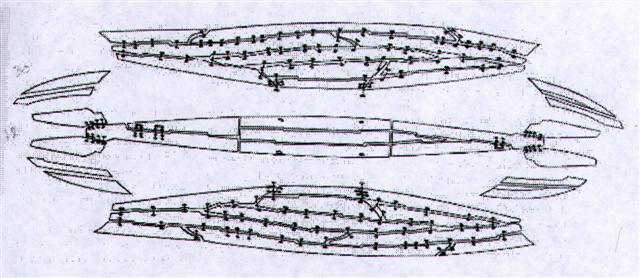
|




















